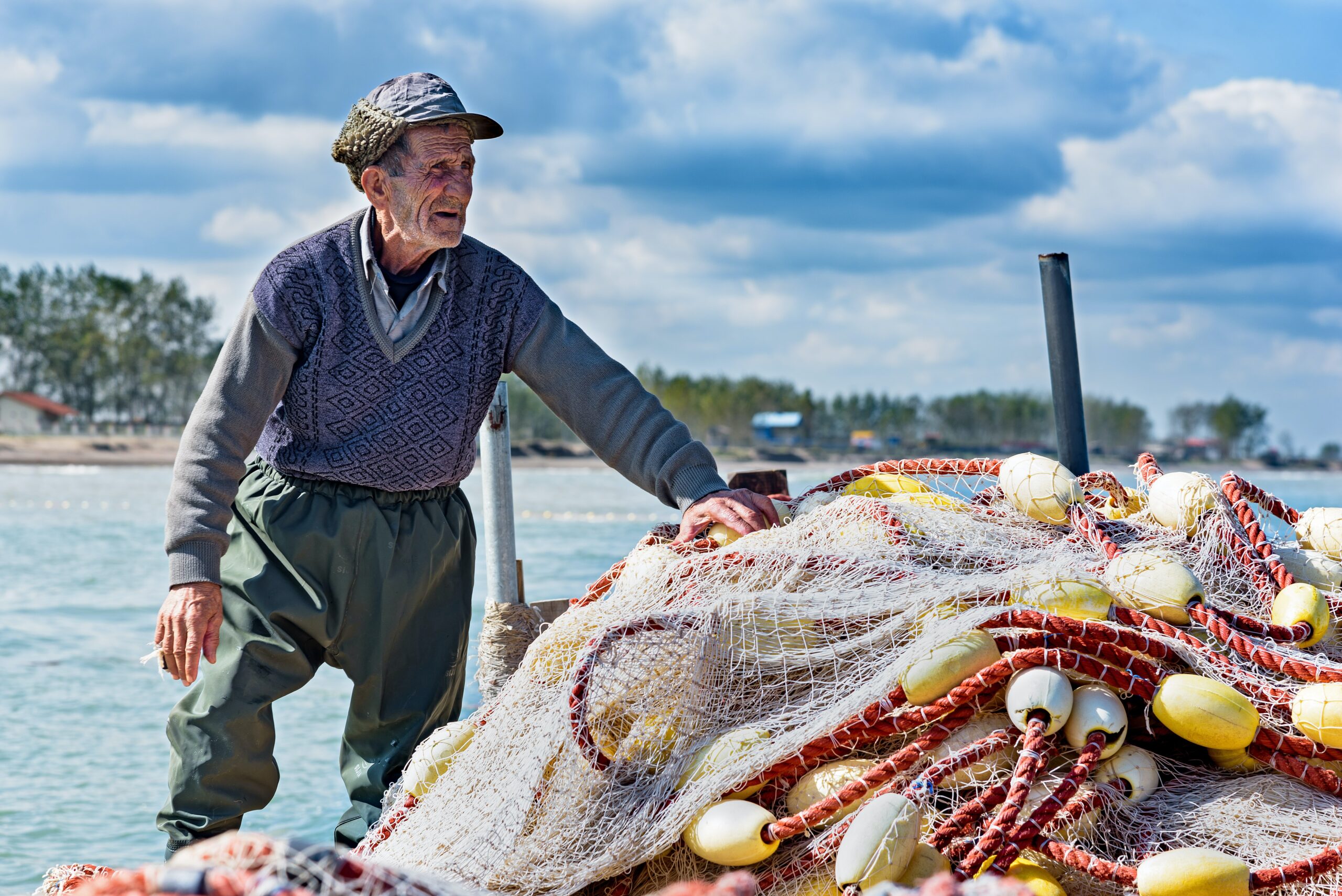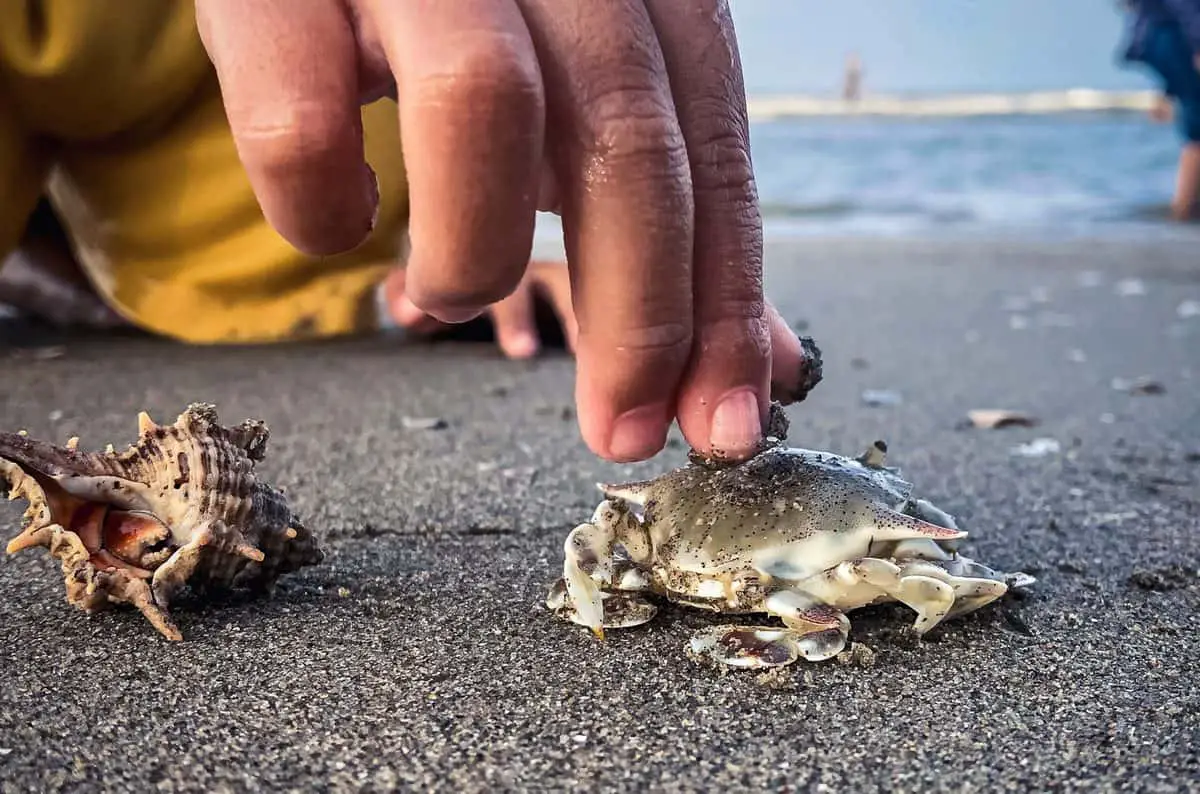There’s no doubt that the rise in popularity of veganism has made us all more aware of the adverse effects of harming and eating animals. Today, we’re going to look at one of the most popular types of seafood that end up on our dinner plates – crab. Is eating this crustacean cruel?
Crab has several nutritional benefits and is a versatile protein source that can be used in many dishes. Unfortunately, eating crab is often highly unethical because of the negative effects on marine life ecosystems, the environment, and the crab population.
These little crawlers may be small, but the effect they have on the world is immense. Taking a more in-depth look into this effect can help better understand why crab consumption is wrong.
Negative Effects of Eating Crabs
It’s easy to just focus on ourselves by arguing that seafood tastes good or benefits our health. If we expand our viewpoint and look at the world at large, it becomes apparent that the cons of eating crab outweigh the pros.
Inhumane Methods
The most common way to cook crab is to boil them alive. Chefs recommend this method so that the most flavor can be extracted from the crab. However, this also means that it is very rare to consume crab in a humane and painless way.
Some chefs do chop the crab before cooking it. But, this does not guarantee that those crabs die humanely. It is reported that most chefs do not know how to break the crab down properly. Unless a seafood specialist is preparing it, the chances are that the crab is suffering.
Another crustacean that suffers the same fate is lobster. Often, chefs prefer to boil them alive to reap the best flavor. However, it is extremely painful and cruel to the animals. If you want to know whether there is a humane way to eat lobster, then you can read on here: Is it Cruel to Boil a Live Lobster?
Marine Life
Every animal in the ocean, no matter the size, plays a role in the ecosystem's function. So, something like fishing crabs for human benefit can throw many of the ocean’s delicate functions out of balance, depending on how it’s done. Yes, something as small as eating crab can have a considerable impact on the environment, and we’re going to discuss why.
Overfishing
To eat crab, somebody has to catch it. And many people enjoy eating crab, so the fishing systems need to be industrialized. Commercial fishing boats catch sea animals, such as crabs, that are then sold for meat.
The biggest problem with these enormous nets is that they end up catching more animals than needed and sea life like dolphins or turtles, which are not meant for consumption.
Prawns are also often caught with commercial fishing boats, which has the same impact on the environment. So, if you enjoy eating prawns, then we highly recommend reading this article to see how you can source it sustainably: Is it Cruel to Eat Prawns?
Illegal Fishing
Unfortunately, business profits often take priority over ethics – and even over the law sometimes. So, when you hear about overfishing, it is usually made a whole lot worse by illegal activity. When you put illegal fishing and overfishing together – it means that far more animals end up dying than what makes it to the plate. It’s even worse when these practices affect endangered species.
Habitats
As you can tell, fishing can be a very invasive practice, especially when it’s commercialized. So, it's not just other animals that are endangered, but their homes too. Just to catch crabs, Fishermen often have to dig into the habitats of small fish and crabs – thus destroying their homes.
The Food Chain
Another issue with fishing and targeting a specific animal is that it can throw off the entire food chain. Crabs serve as predators for small organisms such as snails and shrimp while simultaneously serving as prey for larger fish and birds. Depleting the crab population can lead to overpopulation in its prey while also reducing a food source for other animals.
When you eat crab, you’re indirectly supporting the harmful practices used to collect that crab. These practices directly harm other marine life.
Beyond the Ocean
The adverse effects of eating crab go beyond the ocean. Here are some ways in which seafood consumption impacts the environment as a whole.
Carbon Emissions
The common denominator when it comes to unsustainable fishing is the commercialization of the process. The boats used to catch seafood rely on fuel that emits carbon into the environment, contributing to global warming. Collecting shellfish, such as crab and lobster, emits the most carbon because boats need to stall to release and collect traps.
Sea Levels
The effects of unsustainable practices all have a compounding effect on each other. Commercial fishing contributes to climate change, which then affects the rising sea levels, and eating seafood plays a fundamental role in that. The carbon that is released into the atmosphere due to commercial fishing practices directly impacts sea levels.
Commercial Seafood
Not all seafood is caught fresh. Commercial fish farming involves farming marine life specifically for consumption and is typically done for smaller animals such as prawns and crabs. Fish-feed is used for farming these animals. Fish-feed can contaminate waters, which, if leaked, can spread diseases.
Crab Population
One of the most common crabs for consumption is the Chesapeake Bay Blue Crab. The table shows how the blue crab population has declined since just 2019.
Blue Crab Population | 2019 | 2020 | Percentage |
|---|---|---|---|
Total Population | 584 M | 405 M | 31% decline |
Juvenile Population | 324 M | 185 M | 42% decline |
Female Population | 191 M | 141 M | 26% decline |
The decline is a result of a combination of increased fishing practices and environmental effects. Unfortunately, commercial fishing directly depletes the crab population by extracting crabs from the ocean while also contributing to global warming and habitat destruction, making the environment less sustainable for marine life.
Blue crabs are not the only species of crabs to suffer from a population decline. In the summer of 2020, Florida issued laws limiting the fishing of stone crabs to prevent its steady population decline.
What Animal Rights Organizations Are Saying
There are tons of different animal rights organizations out there that discourage the exploitation of animals. Leaping Bunny is specifically geared toward shopping, urging consumers to decide to purchase cruelty-free goods.
Beauty Without Bunnies, an organization owned by PETA, goes a step further than shopping. While its name may make it seem as though it is tailored to the cosmetic industry, the organization encourages people not to use animals for eating, goods, or any entertainment. This goal is apparent in its message, “Animals Are Not Ours.”
Animal rights is a global issue. Choose Cruelty-Free is especially big in Australia, promoting messages similar to Leaping Bunny and Beauty Without Bunnies. Recently, there have been more organizations specifically concerned with marine life. Here are some animal rights organizations for the sea:
While these organizations may have different managers and operate in different locations, they have similar goals. Each one is dedicated to raising awareness about the detrimental effects of commercial fishing. And, they also seek to address the environmental impact of marine life exploitation.
Crab Alternatives
We know this sounds very disheartening. But luckily, you are not the only one who wants to make conscientious decisions around the food you eat, and food companies have picked up on this. Today, if you choose to stop eating crab – it doesn’t mean you can no longer enjoy classic crab dishes with plant-based alternatives.
You can make crab dishes using healthy and cruelty-free ingredients such as chickpeas and artichokes. Many of these dishes still maintain a fishy flavor with the addition of kelp. You can see some plant-based recipes here.
Finally, if you are set on eating crab – we recommend looking for local fishermen that source their fish on a microscopic scale. That way, you can at least minimize the adverse effects of commercial fishing.
Imitation crab is something you might consider to be a cruel-free alternative – but it is not. A common misconception about imitation crab is that it is not real meat – but it is! Imitation crab is still made of meat, but predominantly minced fish. So if you are interested in ocean conservation, you probably want to avoid imitation crab.
Conclusion
There are several reasons why eating crab is not only cruel; it poses some ethical risks too. Not only do crabs typically suffer when being prepared for consumption, but eating them negatively affects marine life and the environment as a whole.
Fortunately, plant-based alternatives make it possible to keep enjoying crab dishes without actually hurting them. And, of course, finding local fishermen in the area that source their crab ethically can work as a sustainable alternative if you want that crab dish.


